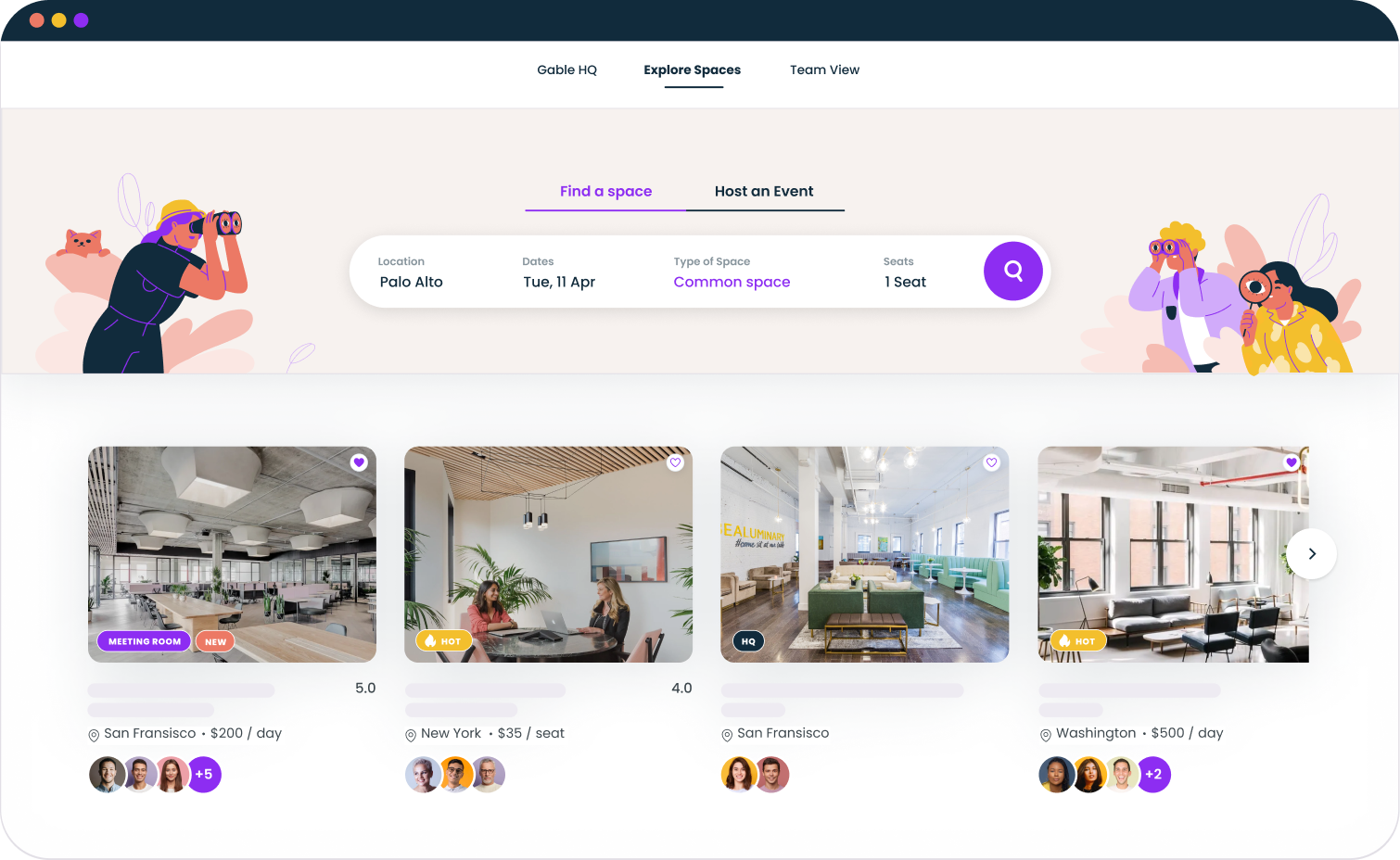- Remote-first isn’t remote-only: Zillow invests heavily in in-person moments that drive real connection.
- Space serves strategy: Office space isn’t fixed—it’s flexible, based on employee needs and business goals.
- Culture drives everything: Strong culture enabled Zillow to scale remote-first while keeping teams engaged.
What happens when a company goes remote-first but still wants teams to feel connected, productive, and part of something bigger?
At Zillow, they didn’t just talk about remote work: they rebuilt their entire workplace strategy to make it thrive.
In Gable’s latest webinar, Zillow’s Jeff Tompkins (Director, CRE & Workplace Ops) and Steve Bennett (Director, Workplace Experience & Gatherings) shared exactly how they’ve slashed office space by 75%, saved $40 million a year, and turned remote-first into a competitive advantage.
This recap has the most actionable insights from the conversation.
Zillow’s shift from real Estate efficiency to human connection
Before the pandemic, real estate decisions were about cost per square foot. Today? It's about value per interaction.
With their Cloud HQ model, Zillow went from 1 million sq ft to just 250,000 sq ft, but that isn't the whole story. They reinvested those savings into building experiences that matter: offices became collaboration hubs, and team gatherings became culture builders.
- $40M saved annually, but not pocketed: reallocated to intentional gatherings.
- 200+ events/year, tailored to teams, with dedicated event planners.
- Offices now adapt constantly—furniture is moved, layouts changed, to suit evolving needs.

Join Workplace Leaders Alliance, an invite-only Slack community where workplace, real estate, and employee experience leaders exchange strategies, ideas, and challenges.
Join now
How Zillow Designs for Intentionality
Zillow didn’t just close offices and call it a day. They designed their workplace for flexibility:
- Real estate as a dynamic asset:
- Offices aren’t fixed. They’re constantly evolving based on feedback, usage, and employee distribution.
- Zillow uses data (badge swipes, booking tools, people analytics) to decide when to downsize or add space.
- Events that build culture:
- Z Retreats: 2-4x/year, tailored, purposeful gatherings—never just "another offsite."
- Local connections: Smaller, city-based events to serve employees where they live.
- Events are fully supported by a dedicated team, automating logistics so leaders focus on content.
- Scaling through systems:
- Custom internal tools track everything—from RSVPs and travel, to cost per attendee.
- Real-time dashboards help the team iterate fast and improve experiences.
Watch the full webinar and get every insight from Zillow’s Jeff Tompkins and Steve Bennett in this 45-minute deep dive.
Watch now
What you can learn from Zillow’s remote-first playbook
Zillow didn’t just get lucky—they built this model through trial, data, and iteration. Here’s how you can apply their lessons:
1. Make in-person moments count
Remote work can succeed, but connection doesn’t happen by accident. Zillow’s events are designed to align teams, share goals, and drive innovation.
2. Treat flexibility as a strategy, not a perk
Give employees freedom, but guide it with intentional norms: how often teams gather, how leaders connect with reports, and how new hires integrate.
3. Let data be your compass
Zillow uses real-time data to make decisions. Know where your employees are, what spaces they use, and how events perform. Adapt constantly.
4. Automate logistics to focus on people
Remove friction: from event planning to office access. Leaders should spend time leading, not worrying about catering orders.
Manage offices, flex spaces, team events, and real-time workplace data in one place.
Get a demo





.svg)





.svg)
















.svg)













